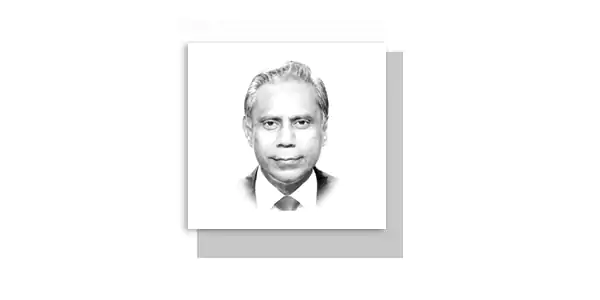PRIME Minister Narendra Modi’s recent visit to the United States has sparked a lot of debate and discussion.
Some argue that India got a raw deal, while others believe that the visit was a success.
Let’s delve into the details and analyse the outcomes of this high-profile visit.
During his visit, Prime Minister Modi met with US President Donald Trump and other key officials.
The primary focus of the discussions was on trade, investment, energy, defence, technology and immigration.
One of the significant outcomes of the visit was the signing of a deal to make the US the top oil and gas supplier to India.
This move is expected to boost the energy partnership between the two countries and help India diversify its energy sources.
However, the visit was not without its challenges. President Trump’s “America First” trade agenda and his plans to impose reciprocal tariffs on US trade partners, including India, were major concerns for New Delhi. The high tariffs on Indian products could potentially harm India’s economy and affect its trade relations with the US. Another critical aspect of the visit was the focus on enhancing intelligence cooperation in counter-terrorism and emerging threats. Prime Minister Modi met with US Director of National Intelligence, Tulsi Gabbard, to discuss various aspects of ties between the two countries. This cooperation is crucial for both nations, given the increasing threats from terrorism and other security challenges.
The visit also highlighted the strong bond between Prime Minister Modi and President Trump. The two leaders exchanged warm greetings and praised each other’s leadership. A landmark achievement of the visit was the announcement of a new defence framework between India and the US to strengthen defence ties and promote joint development, production and technology transfer. Despite this apparent positive outcome, some critics argue that India did not get a fair deal during the visit. They point to the high tariffs imposed by the US and the potential impact on India’s economy.
A major criticism by India’s opposition parties is US President Donald Trump’s offer to sell F-35 fighters to the country, citing their high costs, even as Russia has discussed producing its most advanced jets—its fifth-generation Sukhoi Su-57 fighter—with locally sourced components in India, in consonance with Narendra Modi’s goals. The offer from both US and India’s long-time defence partner Russia comes at a time when the Indian Air Force’s squadrons have fallen to 31 from an approved strength of 42 and it is seeking to acquire more jets to counter China, which is rapidly building its military. The Congress Party has quoted Trump ally and billionaire Elon Musk’s past criticism of the fighter to target Modi’s government. “The F-35, which Elon Musk has described as ‘junk’, why is Narendra Modi hell-bent on buying it?” asked a post on Congress’s official X account, saying that the aircraft was expensive and had high operational costs.
The US government estimates that an F-35 costs around $80 million. The Congress post cited a November 2024 post by Musk on X in which he shared a video of a drone swarm and captioned it: “Meanwhile, some idiots are still building manned fighter jets like the F-35”. Musk later said in another X post: “Manned fighter jets are obsolete in the age of drones anyway”. Among the key points of criticism raised by Indian opposition regarding Prime Minister Narendra Modi’s visit to the US, are: Trade Imbalances and Tariffs, Deportation of Indians, Economic Nationalism, Immigration and Visa Issues, Defence and Energy Deals. Opposition parties argue that Modi’s visit did not adequately address the trade imbalances between India and the US. They are particularly concerned about the high tariffs imposed by the US on Indian products which could harm India’s economy and trade relations. There was significant public outrage and opposition criticism over the deportation of 104 Indians from the US, with reports showing them in shackles. This incident was seen as a failure of the Indian government to protect its citizens abroad.
Critics point out that President Trump’s “America First” policy and economic nationalism could complicate India’s plans to boost domestic manufacturing and reduce dependence on imports under the Atmanirbhar Bharat (Self-sufficient India) plan. The opposition is also concerned about the lack of progress on immigration and visa issues, which affect a large number of Indian professionals and students in the US. While the defence and energy deals were seen as positive outcomes, some opposition leaders argue that these agreements primarily benefit the US and do not address India’s long-term strategic interests. Overall, the opposition parties believe that Modi’s visit did not yield significant benefits for India and failed to address critical issues affecting the country’s economy and citizens.
Despite tall claims by the ruling BJP, since October 2024, India’s GDP has declined by $180 Billion. It is now down from $3.6 Trillion to $ 3.5 Trillion. Prime Minister Narendra Modi must realize that the US will endeavour to make India irrelevant in BRICS which will be to its detriment. Moreover, Modi appears to be losing sight of the reality that facing a two-front threat from its next-door neighbours China and Pakistan, expecting the Pentagon—located 12080 kilometres away—to come to its aid is living in a fool’s paradise. The visit may have strengthened the strategic partnership between India and the US, but the jury is still out for a verdict on Modi’s gains.
—The writer, Retired Group Captain of PAF, is author of several books on China.
(sultanm.hali@gmail.com)










